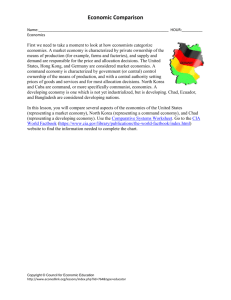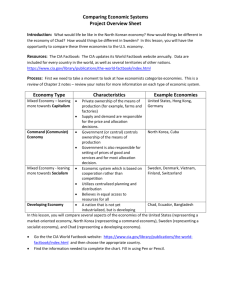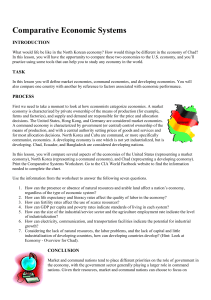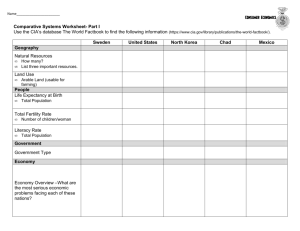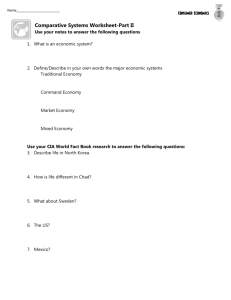File
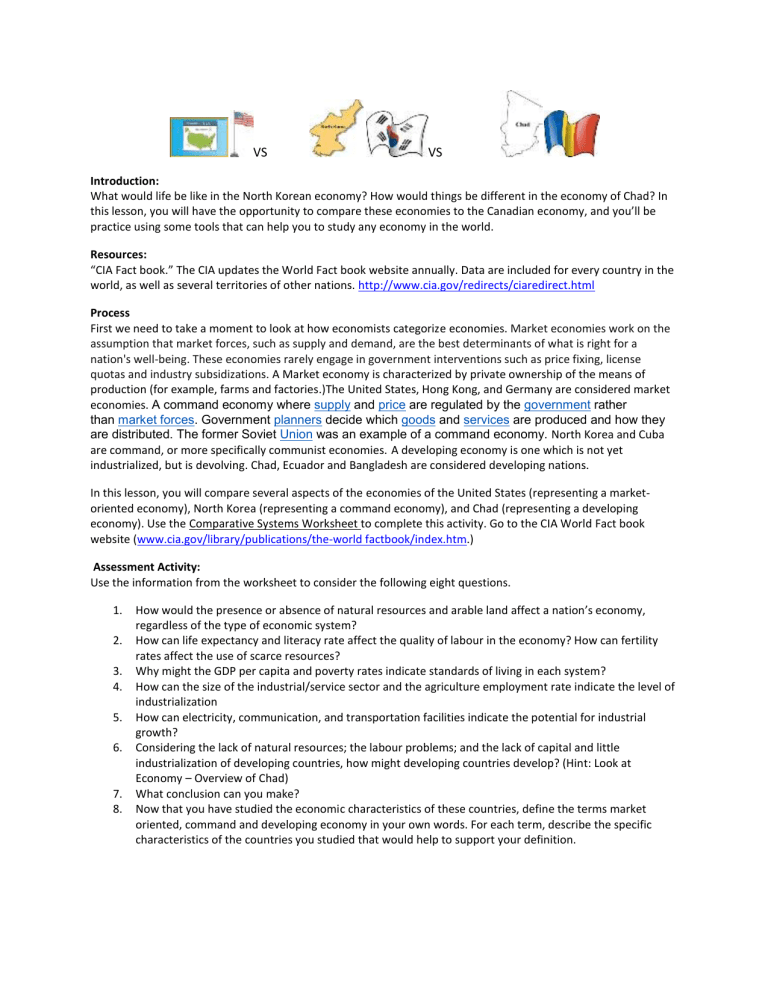
VS VS
Introduction:
What would life be like in the North Korean economy? How would things be different in the economy of Chad? In this lesson, you will have the opportunity to compare these economies to the Canadian economy, and you’ll be practice using some tools that can help you to study any economy in the world.
Resources:
“CIA Fact book.” The CIA updates the World Fact book website annually. Data are included for every country in the world, as well as several territories of other nations. http://www.cia.gov/redirects/ciaredirect.html
Process
First we need to take a moment to look at how economists categorize economies. Market economies work on the assumption that market forces, such as supply and demand, are the best determinants of what is right for a nation's well-being. These economies rarely engage in government interventions such as price fixing, license quotas and industry subsidizations. A Market economy is characterized by private ownership of the means of production (for example, farms and factories.)The United States, Hong Kong, and Germany are considered market economies. A command economy where supply and price are regulated by the government rather than market forces . Government planners decide which goods and services are produced and how they are distributed. The former Soviet Union was an example of a command economy. North Korea and Cuba are command, or more specifically communist economies.
A developing economy is one which is not yet industrialized, but is devolving. Chad, Ecuador and Bangladesh are considered developing nations.
In this lesson, you will compare several aspects of the economies of the United States (representing a marketoriented economy), North Korea (representing a command economy), and Chad (representing a developing economy). Use the Comparative Systems Worksheet to complete this activity. Go to the CIA World Fact book website ( www.cia.gov/library/publications/the-world factbook/index.htm
.)
Assessment Activity:
Use the information from the worksheet to consider the following eight questions.
1.
How would the presence or absence of natural resources and arable land affect a nation’s economy, regardless of the type of economic system?
2.
How can life expectancy and literacy rate affect the quality of labour in the economy? How can fertility rates affect the use of scarce resources?
3.
Why might the GDP per capita and poverty rates indicate standards of living in each system?
4.
How can the size of the industrial/service sector and the agriculture employment rate indicate the level of industrialization
5.
How can electricity, communication, and transportation facilities indicate the potential for industrial growth?
6.
Considering the lack of natural resources; the labour problems; and the lack of capital and little industrialization of developing countries, how might developing countries develop? (Hint: Look at
Economy – Overview of Chad)
7.
What conclusion can you make?
8.
Now that you have studied the economic characteristics of these countries, define the terms market oriented, command and developing economy in your own words. For each term, describe the specific characteristics of the countries you studied that would help to support your definition.
